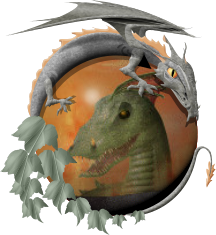- Cities and buildings
- Fields, plains and deserts
- Forests
- Hills and mountains
- Islands and promontories
- Lands, realms and regions
- Rivers and lakes
- Seas and oceans


 |
||||||
|


Which personality type are you?
Take the Free mydiscprofile Personality Test to discover your core personality and your ideal job.   Which personality type are you? |
UrulókiThe Fire-drakes
Glaurung, first of the Urulóki
The fire-drakes; Dragons who breathed fire. Glaurung, Father of Dragons, was the first of these. He first appeared in the year I 260, but he would later be slain, and many of his kind were destroyed in the War of Wrath at the end of the First Age. Nonetheless, at least some of the urulóki certainly survived the downfall of their master, Morgoth. Ancalagon apparently belonged to this kind,1 and Smaug, the great fire-breathing Dragon that sacked Erebor, seems to have been the last of the great urulóki. Other lesser types apparently survived to the end of the Third Age and beyond.2 Singular Difficulties'Morgoth loosed upon the people of Narog the great host that he had long prepared; and Glaurung the Urulóki passed over Anfauglith...'
This description of Glaurung contains a subtle peculiarity: urulóki is a plural, not a singular form, and doesn't seem to fit here (as if the sentence said, 'Glaurung the Dragons'). The original manuscript for this section reads: 'Later in the year, having
Commentary to §277 of The Grey Annals
in The War of the Jewels (The History of Middle-earth volume XI) (our emphasis) Here, J.R.R. Tolkien uses the singular urulókë, which seems to fit much more easily into the sentence. The reasons for this change are mysterious. Conceivably, the published Silmarillion is in error, and should read 'Glaurung the Urulókë'. It's equally possible, though, that Christopher Tolkien had good reasons for making the change - perhaps he had access to material unknown to us, or simply wanted to avoid confusing the reader (since the plural form occurs earlier in the Silmarillion). Notes
See also...For acknowledgements and references, see the Disclaimer & Bibliography page. Original content © copyright Mark Fisher 1997-2000. All rights reserved. For conditions of reuse, see the Site FAQ. Website services kindly sponsored by Discus from Axiom Software Ltd.Find out how you can get the most out of teams using the DISC personality test. |